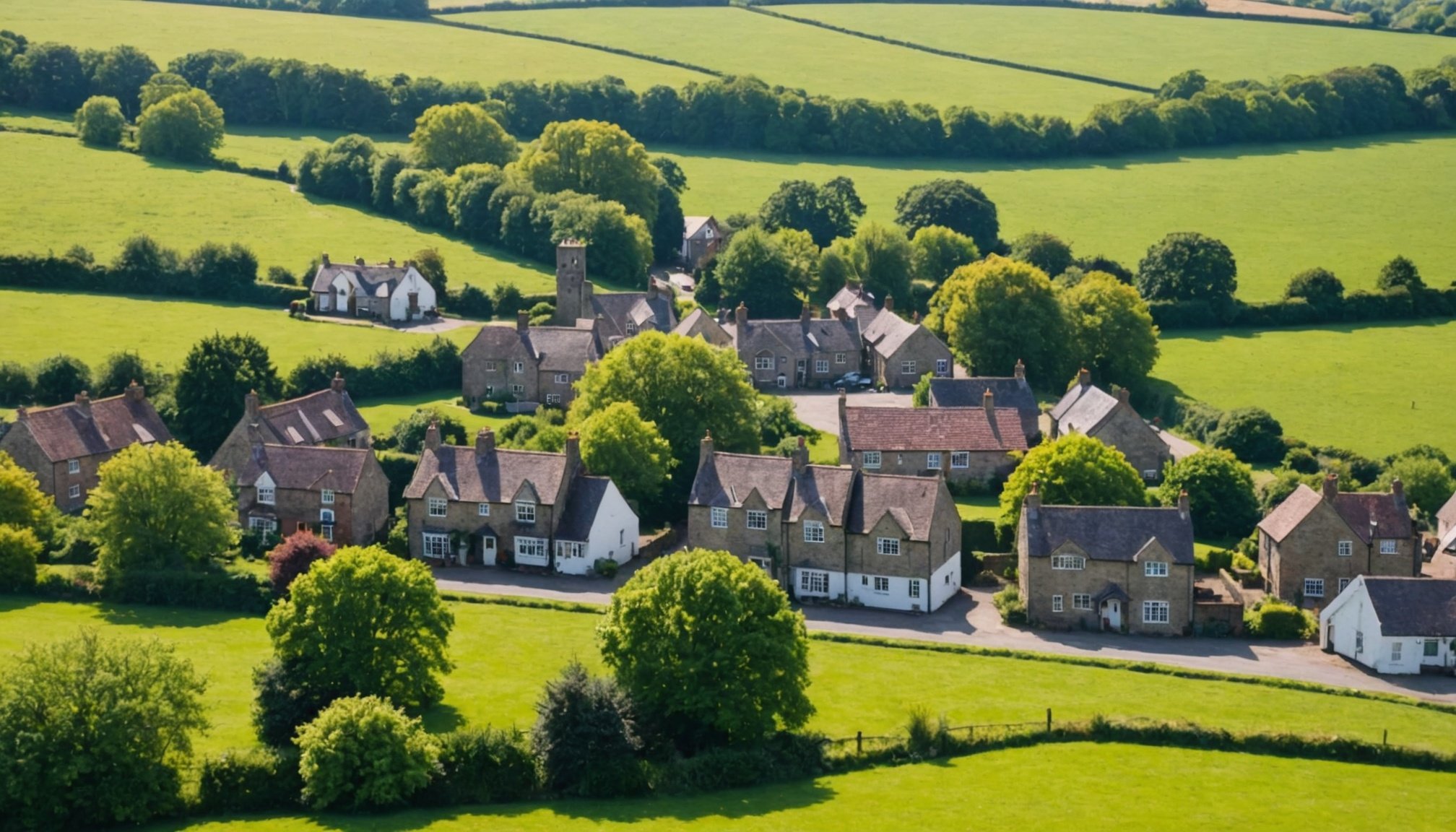The property market in the UK presents a complex landscape that varies significantly between urban and rural areas. Understanding these differences is crucial for anyone considering a property investment or home purchase. Urban areas, characterized by their bustling economies and dense populations, often present a stark contrast to rural regions, where tranquility and open spaces reign. In this article, we will explore various facets of the property market in both settings, shedding light on key differences in pricing, demand, type of properties, and overall living experience. This exploration will equip you with valuable insights whether you are looking to buy, sell, or simply understand the dynamics of the property market in the UK.
Property Prices: A Comparative Overview
The first significant difference between urban and rural property markets lies in property prices. Typically, urban areas command higher prices due to high demand and limited supply. Cities like London, Manchester, and Birmingham often see property prices soar beyond what rural areas can offer. For example, in London, the average price of a property can exceed £500,000, while in some rural areas, it may be possible to find charming homes for less than £300,000.
Also to discover : What are some effective ways to increase rental yields for UK properties?
Several factors contribute to these pricing disparities. Urban dwellers often benefit from proximity to work, education, and amenities such as shopping and entertainment. This convenience creates a high demand for properties, resulting in increased prices. On the other hand, rural areas, while offering attractive features like scenic views and larger properties, may struggle with demand and may not attract the same level of investment.
Additionally, fluctuations in the housing market can impact these price differences. For instance, during economic downturns, urban property prices may stabilize faster than those in rural areas, which can experience greater volatility. Buyers in rural markets may find that properties linger for longer on the market, leading to more negotiation opportunities. In contrast, urban properties often sell quickly, sometimes even in bidding wars, reflecting a competitive market.
Also read : What financing options are available for property renovation projects in the UK?
Overall, understanding these pricing dynamics is essential for potential buyers. Urban areas may seem more appealing due to their vibrancy and amenities, but it’s crucial to weigh these factors against the financial implications of purchasing in such a high-demand environment.
Demand and Supply: Urban vs. Rural Dynamics
Demand dynamics in the property market reveal further contrasts between urban and rural regions. Urban areas generally experience higher demand with a constant influx of people drawn by employment opportunities, educational institutions, and healthcare facilities. Supply in these regions struggles to keep pace with this demand. For instance, cities often face challenges related to space constraints, leading to high-density living options such as flats and apartments.
In contrast, rural areas often face a different scenario. While the demand for properties in the countryside has seen a resurgence—especially post-pandemic, as remote working becomes more commonplace—supply can be significantly affected by local planning regulations and the availability of land. Many rural properties are older and may require renovations, which can deter some buyers. Furthermore, rural areas may not offer the same level of infrastructure, which can influence demand.
The landscape of telecommuting has certainly shifted some dynamics. Urban residents seeking more space and a better quality of life have increasingly turned to rural areas. This trend has contributed to rising property prices in much-loved villages and towns. However, this increased demand can lead to frustration among locals who may find their options limited as new buyers enter the market, pushing prices higher.
Understanding the current demand and supply trends is crucial. If you are considering a property purchase, recognizing these patterns allows you to make informed decisions, whether looking for a vibrant urban lifestyle or a peaceful rural retreat.
Types of Properties: Urban Versus Rural Living
The types of properties available in urban and rural areas also vary significantly. Urban areas often feature a mix of modern developments, converted commercial spaces, and historic buildings, catering to a diverse population. Flats, townhouses, and apartments dominate the urban landscape, appealing particularly to young professionals and those valuing convenience.
In contrast, rural areas tend to offer a different range of properties. Here, you are more likely to find larger detached houses, cottages, and bungalows. The appeal of these homes lies in their spaciousness, gardens, and often stunning countryside views. This type of living can be particularly attractive to families seeking a quieter lifestyle or retirees looking for a peaceful environment.
Moreover, the condition of properties in rural areas can vary widely. Many homes are older, and while they may exude charm and character, they may also require significant renovation. Buyers should be prepared for the possibility of taking on renovation projects, which can be both rewarding and challenging. In contrast, urban properties, especially newer builds, often come with modern amenities and require less immediate maintenance, making them suitable for individuals looking for a move-in ready option.
Ultimately, understanding the types of properties available in each setting can significantly influence your buying decision. Whether you prioritize modern conveniences or the allure of historical architecture and natural surroundings, recognizing what each area offers will help you find the perfect home.
Living Experience: Lifestyle Choices in Urban and Rural Areas
The living experience in urban versus rural areas presents another layer of difference. Urban living is vibrant and fast-paced, with a plethora of entertainment options, dining establishments, and cultural activities. The convenience of public transportation allows for easy travel within the city, making it attractive for those who thrive in a dynamic environment. Moreover, urban areas typically boast a diverse population, contributing to a rich tapestry of cultures and lifestyles.
Conversely, rural living offers a slower pace, marked by tranquility and connection with nature. Many people find this appealing as it often leads to a healthier lifestyle with more outdoor activities available. Rural communities tend to be tight-knit, where neighbors know one another and community events foster a sense of belonging. However, this lifestyle may come with trade-offs, such as longer commutes to work or limited access to amenities and services.
Moreover, the impact of the COVID-19 pandemic has catalyzed a shift in perceptions regarding urban versus rural living. With remote work becoming more common, many individuals are reconsidering the necessity of living in urban centers. This trend has shifted some of the demand towards rural areas, as people seek larger homes and an improved quality of life.
Understanding these lifestyle choices is essential when considering where to buy property. Each environment offers unique benefits and challenges, making it vital to align your property choice with your personal preferences and lifestyle needs.
In conclusion, the property market in the UK presents notable differences between urban and rural areas, influenced by a range of factors including pricing, demand, types of properties, and overall living experience. Urban areas offer vibrant lifestyles with higher property prices and diverse living options, while rural areas present an opportunity for tranquility and spacious living at potentially lower costs.
For those contemplating a property purchase, it is essential to consider these variances carefully. Whether you find yourself drawn to the hustle and bustle of city life or the serene beauty of the countryside, a well-informed decision can lead to a fulfilling living experience. In the end, the right choice will depend on your personal circumstances, lifestyle preferences, and long-term goals.











